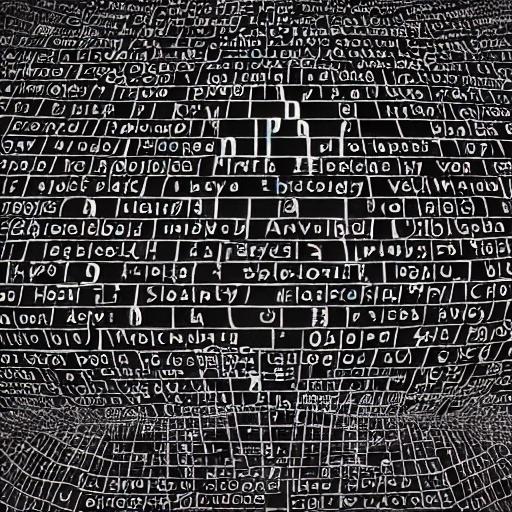One of the most fascinating aspects of gematria is the discovery of different words and phrases that share the same numerical value. When seemingly unrelated concepts reveal identical numerical signatures, it raises an intriguing question: Are these mathematical matches mere coincidences, or do they point to deeper connections encoded in language itself? Let's explore some of the most surprising and thought-provoking gematria equivalences across various systems, and consider what they might—or might not—reveal.

The Mathematics of Coincidence
Before diving into specific examples, it's worth understanding the mathematical probability of finding matching numerical values in gematria systems.
The Birthday Paradox Principle
The frequency of matching gematria values can be partially explained by a mathematical concept similar to the famous "birthday paradox." In a room of just 23 people, there's a greater than 50% chance that two people share a birthday—a result that surprises many because it seems counterintuitive.
Similarly, when calculating gematria values for a large number of words and phrases, the probability of finding matches rises dramatically. In a typical gematria system with values ranging from 1 to 1000, you would need relatively few words before matches become mathematically expected rather than surprising.
Statisticians note that if you calculate the gematria values of just 40 different words in a system with 1000 possible values, the probability of finding at least one match is already over 50%. With 100 words, that probability rises to over 99%.
The Role of Selection Bias
Another factor to consider is selection bias. Gematria enthusiasts typically calculate thousands of words and phrases, but only report the matches that seem meaningful or striking. This selective reporting can create an impression that meaningful correspondences are more common than random chance would predict.
Additionally, the flexibility in how words and phrases can be spelled or formulated (with or without articles, with different word orders, etc.) increases the likelihood of finding matches with desired numerical values. When practitioners have multiple ways to express a concept, the chances of finding a formulation that yields a specific numerical value increase substantially.
Hebrew Gematria Equivalences
Some of the most historically significant and widely discussed gematria equivalences come from traditional Hebrew systems:
Echad (One) and Ahavah (Love)
In standard Hebrew gematria:
- "Echad" (אחד, meaning "one"): Aleph (1) + Chet (8) + Dalet (4) = 13
- "Ahavah" (אהבה, meaning "love"): Aleph (1) + Heh (5) + Bet (2) + Heh (5) = 13
This equivalence has been cited for centuries as evidence of a deep connection between the concepts of unity and love in Jewish mystical thought. Kabbalists interpret this match as indicating that true love requires unity and that divine unity expresses itself as love. The fact that these two fundamental concepts share the same numerical value is seen as revealing an essential truth about the nature of reality.
Heaven and Hell
Another famous Hebrew gematria equivalence involves the words for "heaven" and a slight variation of "hell":
- "Shamayim" (שמים, meaning "heaven"): Shin (300) + Mem (40) + Yod (10) + Mem (40) = 390
- "Esht" (אשת, a variant form related to "fire" or "hell"): Aleph (1) + Shin (300) + Tav (400) + Aleph (1) = 702
While these don't match directly, kabbalistic tradition notes that if you calculate the "filled" or "spelled-out" form of each letter in "shamayim," its value becomes 702—matching the value of "esht." This has been interpreted to suggest that heaven and hell are ultimately different perceptions of the same divine reality, distinguished only by how we experience it.
The Messiah and Serpent
One of the most provocative equivalences in Hebrew gematria is between the words for "messiah" and "serpent":
- "Mashiach" (משיח, meaning "messiah"): Mem (40) + Shin (300) + Yod (10) + Chet (8) = 358
- "Nachash" (נחש, meaning "serpent"): Nun (50) + Chet (8) + Shin (300) = 358
Jewish mystical commentators have found profound meaning in this equivalence, suggesting that the messiah and the serpent represent opposite spiritual poles—ultimate redemption versus primal temptation—yet share the same numerical potential. Some interpret this as indicating that spiritual transformation can turn negative forces (the serpent) into redemptive ones (the messiah).
English Gematria Correspondences
Modern English gematria systems have revealed their own set of intriguing equivalences:
Simple English Gematria
In Simple English Gematria (A=1, B=2, C=3, etc.), some notable equivalences include:
- "LOVE" (12+15+22+5) = 54 = "HOPE" (8+15+16+5)
- "FAITH" (6+1+9+20+8) = 44 = "COSMIC" (3+15+19+13+9+3)
- "WISDOM" (23+9+19+4+15+13) = 83 = "CULTURE" (3+21+12+20+21+18+5)
These matches between conceptually related words have led some practitioners to suggest that the English alphabet, despite its relatively recent development compared to ancient scripts like Hebrew, might also contain inherent numerical wisdom.
Full Reduction Gematria
In Full Reduction Gematria, where all letters are reduced to values 1-9 (A=1, B=2... J=1, K=2, etc.), different patterns emerge:
- "COMPASSION" (3+6+4+7+1+1+1+9+6+5) = 43 = "SPIRITUAL" (1+7+9+9+9+2+3+1+3)
- "KNOWLEDGE" (2+5+6+5+3+5+4+7+5) = 42 = "UNIVERSE" (3+5+9+4+5+9+1+5)
- "MEDITATION" (4+5+4+9+2+1+2+9+6+5) = 47 = "AWARENESS" (1+5+1+9+5+5+5+1+1)
Proponents of this system suggest that the clustering of spiritually related concepts around specific numbers indicates a meaningful pattern rather than random coincidence.
Famous and Controversial Examples
Some gematria equivalences have gained widespread attention due to their seemingly uncanny or controversial nature:
The New York Connection
In Simple English Gematria:
- "NEW YORK" (14+5+23+25+15+18+11) = 111
- "TWIN TOWERS" (20+23+9+14+20+15+23+5+18+19) = 166
- "SEPTEMBER" (19+5+16+20+5+13+2+5+18) = 103
After the September 11, 2001 attacks, some noticed that these values, when combined in various ways, created patterns that seemed to reference the event. For instance, 111 (New York) + 111 (a repeating pattern) = 222; and 166 (Twin Towers) + 103 (September) = 269, which some interpreted as relating to the date 9/26 backward.
While most academics view such connections as examples of finding patterns after the fact (a form of apophenia), they demonstrate how gematria can be used to create narratives connecting real-world events.
Presidential Connections
Various gematria systems have been used to find numerical connections between presidents and significant concepts:
- In Jewish gematria, "Donald Trump" and "Messiah" both calculate to 424
- In Simple English Gematria, "Abraham Lincoln" (65) + "John Kennedy" (122) = 187, the same value as "assassinated presidents"
These types of calculations often go viral on social media, though critics point out that they typically require selective calculation methods and specific word formulations to work.
Scientific and Mathematical Equivalences
Some of the most intriguing gematria equivalences involve scientific or mathematical concepts:
Pi and the Hebrew Alphabet
In Hebrew gematria, the numerical value of the word "hakkdosh" (הקדש, meaning "the holy") is 409. When divided by the word "echad" (אחד, meaning "one") with a value of 13, the result approximates Pi: 409 ÷ 13 = 31.46..., which is close to 10π (31.415...).
Some Kabbalists have suggested that this mathematical relationship encoded in holy terms represents divine wisdom embedding mathematical constants in sacred language.
The Fine Structure Constant
The fine structure constant, a fundamental physical constant with a value of approximately 1/137, has connections to gematria that some find meaningful:
- The Hebrew word "Kabbalah" (קבלה) has a value of 137
- The phrase "The God of Truth" (אלהי אמת) also equals 137
Physicist Wolfgang Pauli, who was deeply interested in the significance of the fine structure constant, collaborated with psychologist Carl Jung on exploring numerical coincidences. Some modern researchers continue to investigate whether such numerical alignments between physical constants and mystical terms might indicate deeper patterns in reality.
Psychological Perspectives
Beyond questions of coincidence versus design, gematria equivalences raise fascinating psychological questions:
The Meaning-Making Mind
Cognitive scientists note that humans are naturally predisposed to find patterns and assign meaning to them—a tendency called apophenia or patternicity. This cognitive bias served our ancestors well (better to mistake a shadow for a predator than vice versa), but it can lead us to perceive intentional design in random coincidences.
At the same time, our pattern-recognition abilities allow us to discern genuine order in complex systems. The challenge with gematria equivalences is determining which matches reflect actual encoded meaning and which are inevitable statistical occurrences.
Synchronicity and Meaning
Carl Jung's concept of synchronicity—meaningful coincidences that aren't causally connected—offers another perspective on gematria matches. Jung suggested that apparent coincidences might reflect an acausal connecting principle in the universe, a perspective that resonates with many gematria practitioners.
From this viewpoint, whether or not gematria equivalences were intentionally designed becomes less important than the meaningful connections they reveal to the practitioner. The subjective experience of discovering a numerical connection between concepts that resonates personally can be spiritually significant regardless of its statistical probability.
Linguistic Considerations
Linguistics offers additional perspectives on why certain words might share numerical values:
Etymology and Shared Roots
Words with shared etymological roots often contain similar letter patterns, increasing the likelihood that they'll have similar or identical gematria values. For example, in Hebrew, words derived from the same three-letter root will naturally share some numerical components, making them more likely to have related values.
This linguistic factor suggests that some gematria connections might indirectly reflect the genuine historical relationships between words rather than mystical design.
Cultural Associations
Words that are culturally associated might have evolved in ways that unconsciously led to numerical similarities. Concepts that a culture views as connected might develop similar linguistic patterns over time, potentially resulting in related gematria values.
This perspective suggests that gematria might sometimes reveal cultural-linguistic patterns that developed organically rather than through intentional encoding.
Practical Applications
How do people use these equivalences in practical spiritual or interpretive contexts?
Textual Interpretation
In traditional Jewish biblical interpretation, gematria equivalences help scholars draw connections between different passages. When words in separate texts share the same numerical value, this might suggest a thematic connection not explicit in the literal meaning.
For example, the Hebrew word for "wine" (יין = 70) has the same gematria value as "secret" (סוד = 70). This equivalence is used to explain why wine is used in many Jewish rituals—it symbolically represents the revealing of divine secrets when used in sacred contexts.
Meditation and Contemplation
Many practitioners use gematria equivalences as focal points for meditation. By contemplating why two seemingly different concepts share the same numerical value, they gain insights into potential hidden connections between them.

For instance, meditating on why "love" and "one" share the value of 13 in Hebrew might lead to realizations about the unifying nature of love or the loving nature of unity that wouldn't arise from intellectual analysis alone.
Conclusion: Between Random Chance and Hidden Order
The phenomenon of matching words with equal gematria values exists in a fascinating space between mathematical inevitability and potentially meaningful design. While statistics tells us that such matches must occur by chance alone, the specific pairs that emerge often exhibit thematic connections that seem to transcend coincidence.
Perhaps the most balanced approach is to recognize both perspectives: mathematics ensures that numerical matches will occur randomly, but this doesn't preclude the possibility that some equivalences might reveal genuine insights into the structure of language and thought. The boundary between coincidence and code may not be as clear-cut as either skeptics or true believers might prefer.
Whether you approach gematria equivalences as fascinating coincidences, meaningful synchronicities, or evidence of divine encoding, exploring these numerical connections offers a unique lens for examining the relationships between words, concepts, and the mathematical patterns that permeate our world. In the space between randomness and design, gematria continues to invite us into a realm where numbers and meanings intertwine in ways that challenge our understanding of both.
